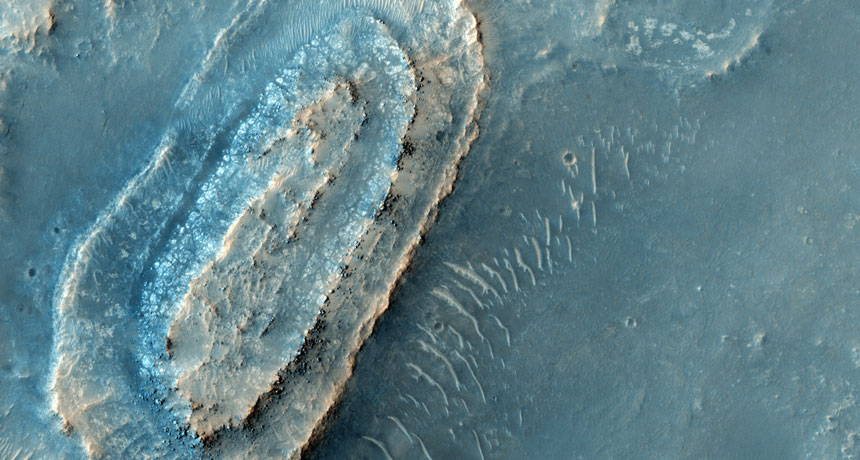More hints of Martian hot springs may hold promise for Mars 2020 mission
One potential landing site appears to have ridges that hint at past hydrothermal activity

ANCIENT FEATURES Northeast Syrtis Major (shown) is a candidate landing site for the Mars 2020 mission. The bedrock in the region is more than 4 billion years old. Certain ridges there may be the result of ancient hot springs, a new study of similar features elsewhere on Mars suggests.
UNIV. OF ARIZONA, JPL-CALTECH/NASA







